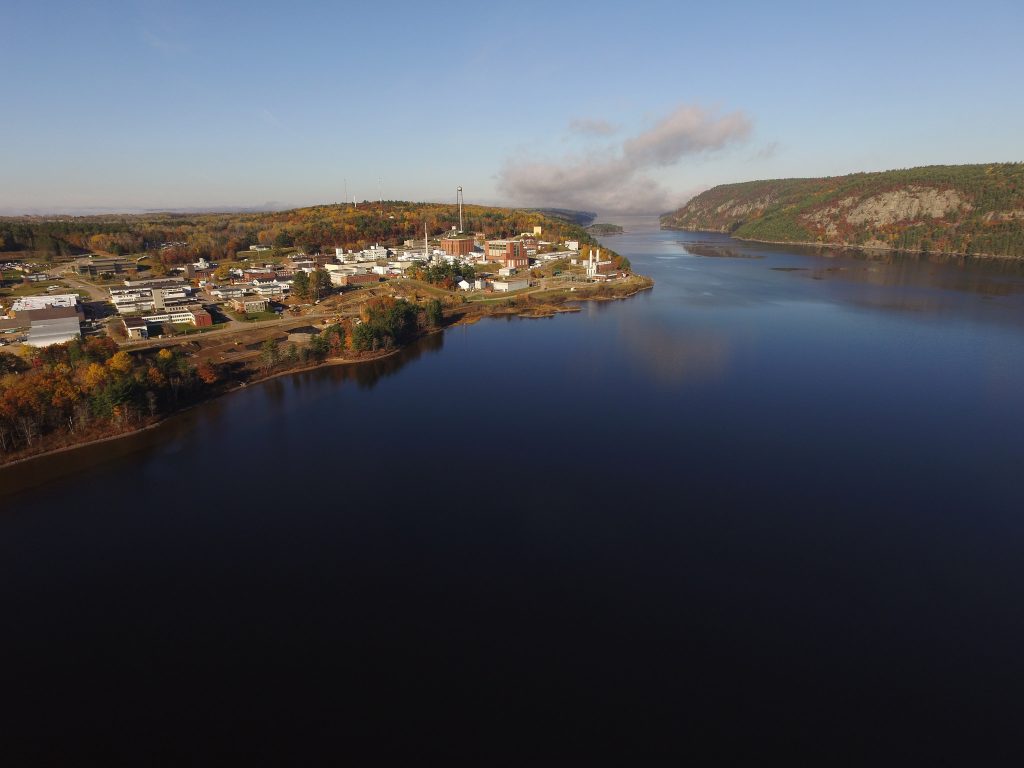Concern mounts over planned disposal facility near Ottawa River
By Michael Charlebois
Public concern is mounting over a plan to build a disposal facility for radioactive waste near the Ottawa River upstream from the capital, which draws its drinking water from the waterway.
The proposal involves Chalk River Laboratories in Chalk River, Ont., about 200 kilometres northwest of Ottawa, and would place up to one million cubic metres of radioactive waste in a mound roughly a kilometre from the river near the Laboratories’ riverbank facility.
The Laboratories – a federally owned nuclear research facility operated by Canadian Nuclear Laboratories – has been in operation since the 1940s, and has accumulated a significant amount of radioactive waste. Roughly 90 percent of the waste would come from the Chalk River Laboratories, much of it demolition debris from decommissioned buildings and detritus from soil remediation. The site will “physically resemble a municipal landfill,” according to CNL.
CNL drafted its initial environmental impact statement in March, saying the site would “accommodate the disposal of current and future radioactive waste at the site in a manner that is protective of human health and the environment,” but in August, Ottawa Riverkeeper, an advocacy group that works to protect the health of the Ottawa River, released a report criticizing the plan as a threat to water safety.
“We have huge concern over the water,” said Meredith Brown, a riverkeeper with the group, adding that nuclear waste poses a serious contamination threat that “can last hundreds and thousands of years.”
Just under one million people from Quebec and Ontario, including Centretown residents, rely on the river as their chief source of drinking water.
“Fundamentally, we don’t like the design, we don’t like the proximity to the river, and we have no confidence in how they would keep this isolated from public exposure,” Brown said.
CNL communications director Pat Quinn said that keeping the disposal site on the Chalk River campus will allow for the best environmental protection on what he called “the most studied piece of land in the world.”
“Our environmental monitoring is already extensive and will provide an added degree of protection should there be a breach in any part of the containment,” Quinn said. “In the event of such an unlikely incident, the problem will be detected and addressed.”
In terms of containment technology, Brown of Riverkeeper cited the proposed wastewater facility as one of the red flags.
“The wastewater facility won’t even be able to deal with a lot of the waste that’s going to be going through there.”
The facility is intended to treat precipitation that comes into contact with the radioactive waste, but Brown is not confident it will prevent water runoff, which could allow harmful elements to seep into the river.
“It’s going to rain on it, it’s going to snow, and it’s going to be completely open to the elements,” she said. “They haven’t even articulated in their proposal how they’re going to keep this isolated from public exposure.”
CNL is confident it can protect the river, said Quinn, the communications director.
“Water discharged from the wastewater treatment plant will meet discharge criteria set by the federal government,” he said. “CNL has an environment policy which ensures the protection of the environment as an integral component of our decision-making in all phases of our business activities.”
Since the CNL drafted its first environmental impact statement in March, it has undergone over 30 public information sessions and briefings.
A Canadian Nuclear Safety Commission review of the proposed facility produced 194 federal comments and requests that the CNL needs to address in its final environmental plan, expected in January.

